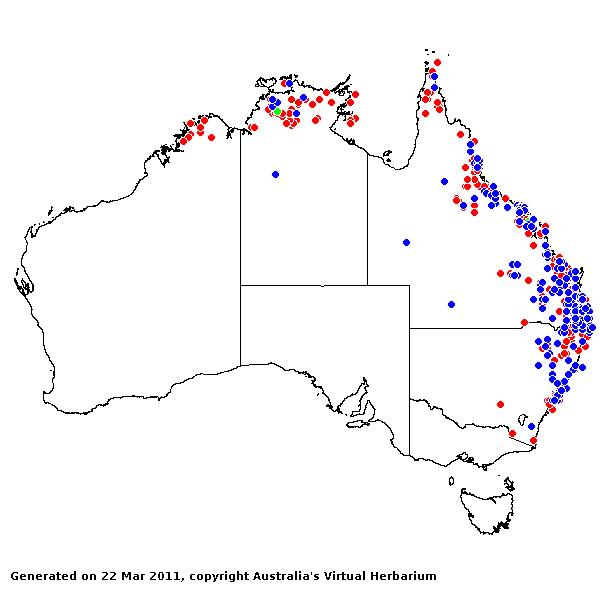Capillipedium Fl. Trop. Afr. 9: 11, 169 (1917).
Derivation:. From the Latin capillus (hair) and pes (foot), alluding to the hair-like pedicels.
Taxonomic revisions, nomenclatural references:. S.T.Blake, Papers Dept. Biol. University Qld, 2(3): 41–46 (1944).
Key references (keys and floras):. E.E.Henty, Manual Grasses New Guinea 43, 46 (1969); J.W.Vickery, Flora of New South Wales, Gramineae 19: 37–39 (1961); M.Lazarides, Tropical Grasses S.E. Asia 24–26 (1980); J.C.Tothill and J.B.Hacker, Grasses of Southern Queensland 146–147 (1983); B.K.Simon, Flora of the Kimberley Region 1133 (1992); B.K.Simon, Key to Australian Grasses 82 (1993); S.W.L.Jacobs and C.A.Wall, Flora of New South Wales 4: 438–439 (1993); D.Sharp and B.K.Simon, AusGrass (2002).
W.D.Clayton & S.A.Renvoize, Genera Graminum (1986), genus (594).
Native. 14 species, from warm regions of the Old World. 2 species in Australia, WA, NT, Qld, and NSW. Also New Guinea and Malesia.
Habit. Annual or perennial, tufted to decumbent. Leaf blades narrow (sometimes aromatic). Ligule an unfringed membrane to a fringed membrane.
Inflorescence. Inflorescence paniculate, an open panicle with branches ending in racemes of paired spikelets, open. Spikelet-bearing axes much reduced or racemes, joints with only one spikelet-bearing joint to with 6–10 spikelet-bearing joints (racemes 1–2 (-8) jointed), with heteromorphic spikelets (the pedicelled spikelets awnless), falling entire or disarticulating at joints. Pedicels and rachis internodes with a longitudinal, translucent furrow. Internodes densely long-hairy or somewhat hairy or glabrous.
Spikelets. Spikelets dorsally compressed, 2 flowered, with 1 fertile floret, awned, in triplets (C. parviflorum) or paired, sessile and pedicelled, in pedicelled/sessile combinations; sessile spikelet with lower incomplete floret. Fertile spikelets falling with glumes.
Glumes. Glumes more or less equal, long relative to adjacent lemmas, awnless, dissimilar. Lower glume two-keeled, convex on back to concave on back, relatively smooth, 6–11 nerved. Upper glume 3 nerved (naviculate).
Florets. Lower incomplete floret(s) sterile. Lemmas awnless, 0 nerved, similar in texture to fertile lemmas. Fertile florets 1. Lemmas reduced to a hyaline stipe, less firm than glumes, not becoming indurated, entire at apex, awned, 1 nerved, glabrous. Awns 1, apical, geniculate, hairless (glabrous). Palea absent. Stamens 3. Grain small, compressed dorsiventrally. Hilum short. Embryo large. Pedicels free of rachis. Pedicelled spikelets much reduced, similar in shape to sessile spikelet, sterile or male, with glumes.
Kranz Anatomy. C4.
2n = 20, 40, and 60, 2, 4, and 6 ploid.
Habitat. Species of open habitats.
Classification. Panicoideae; Andropogoneae.
Notes. A homogeneous genus related to Bothriochloa, but with paniculate inflorescence and short racemes often reduced to triads. Bothriochloa bladhii lies midway between the two genera (Clayton and Renvoize, 1986).
Types Species. C. parviflorum (R.Br.)Stapf.
Biogeographic Element. Clifford & Simon 1981, Simon & Jacobs 1990: Old World Tropics.


